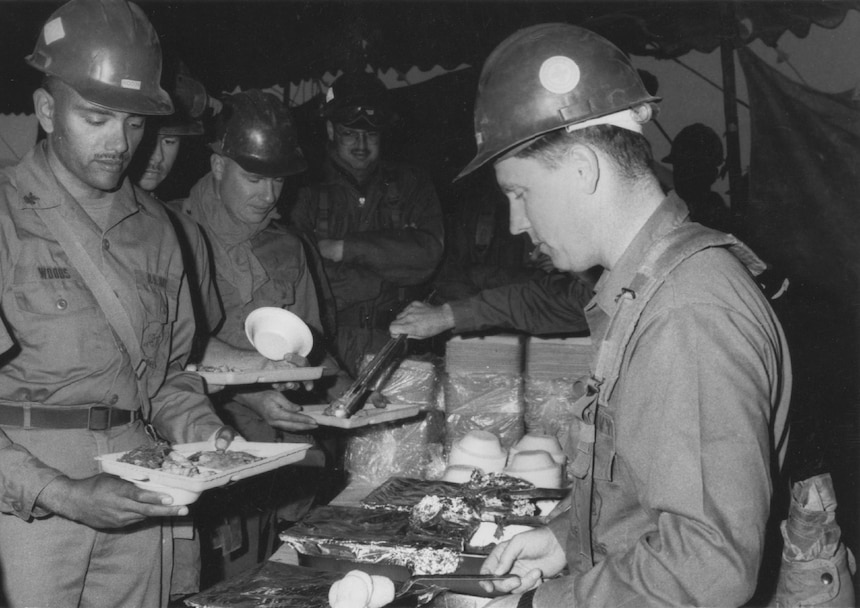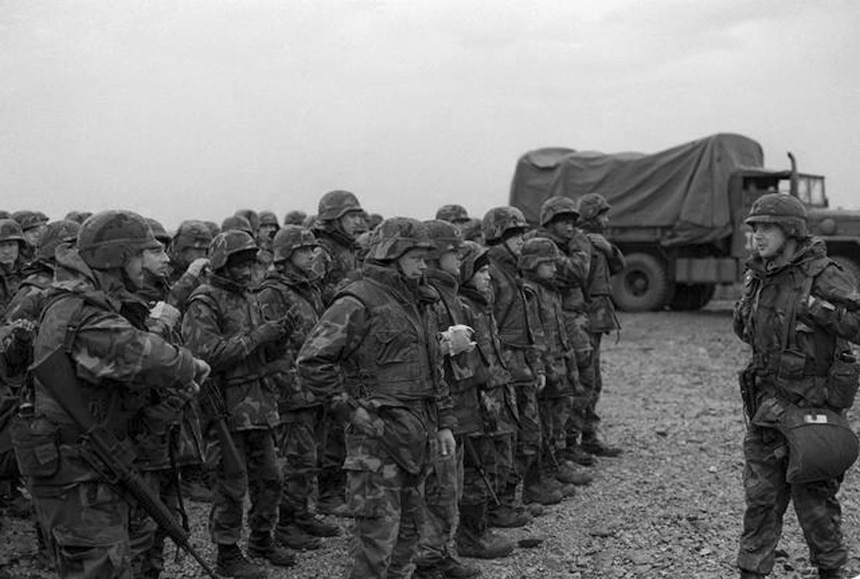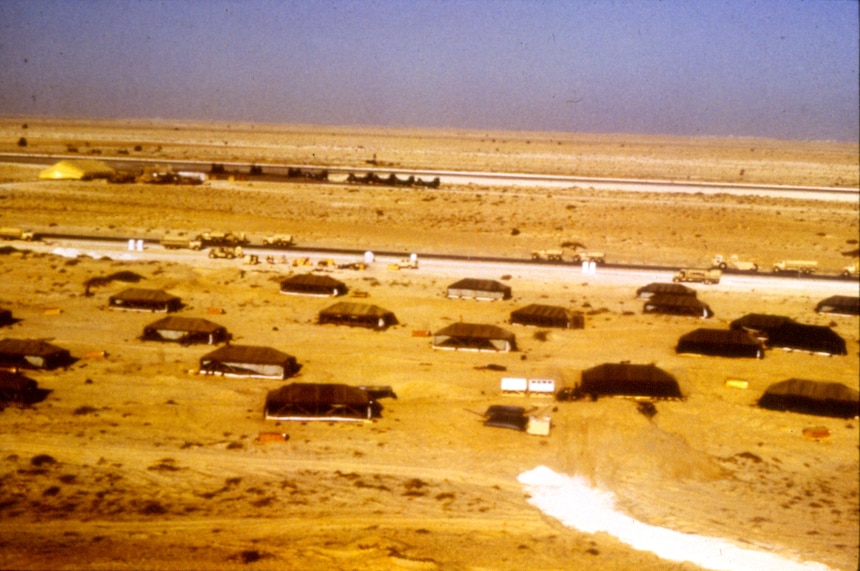Consolidated by U.S. Navy Seabee Museum, Naval History and Heritage Command
December 25

December 26
1942: 58th Naval Construction Battalion (NCB) commissioned at Camp Allen, Norfolk, Virginia.
1943: Seabees of the 19th NCB joined the First Marine Division in the assault on Japanese-held Cape Gloucester, New Britain. During the battle, Seabees bulldozed paths to the Japanese lines so that American tanks could attack hostile positions. By New Year s Day, the Japanese airstrips were captured. However, during this first week, continuous enemy air raids resulted in five men of the battalion killed and 24 wounded.
1944: Construction Battalion Maintenance Unit (CBMU) 629 was split into four detachments of one officer and six men each. Three of the detachments worked with small boat units in their preparation for the Rhine River crossing, and one of the detachments worked with an Army Engineer unit. The first detachment became the first Seabee unit to enter Germany on 26 December. Later, they assembled pontoon barges on the Rhine at Remagen. These barges were to be used in connection with strengthening the Ludendorff Bridge. When that structure collapsed, work on the barges stopped.
Dec. 26-31, 1956: California has been a frequent beneficiary of Seabee firefighting forces. Forest and brush fires have been a special hazard during the state s dry season. Seabees from the Naval Construction Battalion Center (NCBC), Port Hueneme, California, manned the fire lines in the Malibu Canyon Zuma Point area and helped contain one of the worst brush fires in California history. Seabees fought the blaze alongside civilian firefighters. In addition, Seabees were busy putting out small fires that cropped up along the highway, digging trenches, cutting fire breaks in the valley and gullies surrounding the Zuma Mountain Range, helping residents protect their homes from the ravenous flames.

Throughout December
1990: Among the major projects completed during Operation "Desert Shield" were a headquarters complex for the First Marine Expeditionary Force and a 15,000 man camp for the Second Marine Expeditionary Force. The latter project was the largest wartime multi-battalion Seabee project since the Vietnam War. NMCB 1, 4, 5 (project lead), 7, 24, 40 and 74 worked on the project. Construction began in late November. The camp comprised six modules, each capable of housing 2,500 men. Each module contained berthing, office space, showers, toilet facilities, a galley, roads, and parking areas. The completed camp complex was dubbed "Wally World."

Aerial photograph of Wally World - Among the major projects completed during Operation Desert Shield were a headquarters complex for the 1st Marine Expeditionary Force and a 15,000 man camp for the 2nd Marine Expeditionary Force. The completed camp complex was dubbed "Waly World".
Completing these projects required the Seabees to work seven days a week, two twelve hour shifts a day. The only days off during the whole period of Seabee involvement in the Gulf were Thanksgiving and Christmas. The Gulf environment provided an added challenge for the Seabees. When the first wave of Seabees arrived in August, the heat was intense, often reaching 120 F. By the time most of the Seabee units had arrived in December, the heat had mitigated, daytime temperatures in the 70's dropping to the 30's at night. The other major problem was sand: it got into everything and was particularly hard on equipment.
December 27
1945: 10th NCB inactivated. 50th Naval Construction Regiment (NCR) inactivated. 19th, 27th and 78th NCBs inactivated on Okinawa. 30th and 133rd NCBs inactivated on Guam. 19th Special NCB inactivated at Samar, Philippines.
December 28
1941: In a letter to the Bureau of Navigation dated 28 December, the Chief of the Bureau of Yards and Docks wrote that construction work on advance bases in combat zones could be carried on satisfactorily only by the utilization of military personnel under direct military command. Adm. Moreell recommended that early steps should be taken toward the organization of such military construction forces if they are to be trained and available at the times their services will be required. Moreell pointed out in this letter that not less than 12 construction companies of 226 men each should be available for assignment to duty at locations outside the continental limits at an early date in order that the advance base construction program might be carried forward with all possible speed and vigor. He recommended that these companies be grouped into three battalions, with an additional headquarters unit of 168 men for each battalion. These latter units would be composed of cooks, bakers, pharmacist mates and all the other ratings necessary to make the battalion a complete operating unit if thrown into the field on its own. A proposed personnel organization, drawn in detail, was submitted for approval.
1945: 36th Special NCB inactivated at Okinawa.
1967: One flight of the Naval Mobile Construction Battalion (NMCB) 53 advance party arrived on board Camp Adenir and 27 personnel of the NMCB 7 advance party departed for Davisville, Rhode Island.
1971: Underwater Construction Team (UCT) 1 departed Davisville, Rhode Island, for deployment to U.S. Navy Shipyard Norfolk/Portsmouth, Virginia.
December 29
1942: 59th NCB commissioned at Camp Bradford, Norfolk, Virginia.
1945: 72nd NCB inactivated at Sasebo, Japan. 139th NCB inactivated at Okinawa.
1967: Seabee Team 0910 returned to the main body at Da Nang, Republic of Vietnam (RVN), via Boeing 707 aircraft, from leave in the U.S. after completing a six-month deployment to Thailand in November.
1968: NMCB 1 s second advance party of 74 men deployed via aircraft to the West Coast Continental United States (CONUS).
December 30
1942: 62nd NCB commissioned at Camp Endicott, Davisville, Rhode Island.
1968: NMCB 5 s advance party arrived at Camp Hoover, Da Nang, RVN.
December 31
1942: 77th NCB formed at Camp Peary, Magruder, Virginia.
1943: The 96th NCB advance party arrived in the Azores. The main body arrived on Jan. 9, 1944. 140th NCB commissioned at Naval Construction Training Center (NCTC) Camp Peary, Magruder, Virginia. 145th NCB commissioned at NCTC Camp Endicott, Davisville, Rhode Island.
1945: Section II of 10th NCB inactivated at Samar, Philippines. Section I had inactivated at Manila, Luzon, Philippines on 15 November. 83rd NCB inactivated in Tangku, China. 91st NCB inactivated at Manicani Island. 100th NCB inactivated at Samar, Philippines.
1947: The organized construction battalion reserve was authorized by a Bureau of Personnel issued this date. It authorized the formation of 123 organized Seabee companies, each composed of five officers and 40 men. The full strength of the 123 companies, with authorized complements filled, was 615 officers and 4,920 men.
1947: 121st NCB inactivated on Saipan and redesignated at CBD 1504.
1970: While traveling by boat between Cho Moi and Binh Thuy in Vietnam, five Seabees of NMCB 74 s Detail Charlie were killed in action by Viet Cong forces. They were Builder 2nd Class Jerry B. Edmonds Jr.; Construction Electrician 3rd Class Harold E. Asher; Equipment Operator Constructionman Edger P. Beck; Constructionman Wayne Sterling Rushton; and Constructionman Frank Neubauer. The Seabees had been working on two projects at Cho Moi. The first project was the construction of a complete modern naval base which could support more advanced bases, and the second was the construction of concrete block housing for 80 families of RVN personnel.
1971: (Underwater Construction Team) UCT 1 returned from U.S. Naval Shipyard Norfolk/Portsmouth, Virginia.